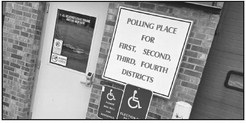Time to raise, expand pet license fees
There was a time when $5 was a lot of money.
Nowadays that is barely the going price for a tooth left under a pillow for the tooth fairy or for the cost of the fuel needed to drive from Medford to Gilman. What a crisp $5 bill will get you is a dog license, provided your dog has been spayed or neutered. The cost goes up to $10 if you choose not to have your pet “fixed.”
The current license fees are laughably low and do little to cover the actual costs incurred by the county to ensure that animals are humanely treated. Writing a separate $5 check for a dog license is more of an annoyance to dog owners than anything else. Faced with increasing costs for running local shelter services, Taylor County should raise the license fee from $5 to at least $10 for animals that have been fixed and a similar increase for those animals that are not fixed.
At the same time, the county should expand the license fee to cover companion animals, including both dogs and cats. Companion animals are those that primarily live in people’s homes and are considered by many pet owners to be extensions of their families.
The reason for extending the fee to include cats is basic economic fairness.
The dog license fee historically has been used to pay out dog damage claims for someone’s dogs harassing a neighboring farmer’s livestock. These complaints stopped being common long before the fee was set at its current $5 level.
The other major purpose of the fee is to help cover the cost of running a local animal shelter where stray cats and dogs can be taken and pet owners unable to continue to care for their animals may surrender them. Taylor County spends more than $45,000 per year to help support the Taylor County Humane Society’s shelter. Of that amount, about $18,000 is covered by license fees with the remaining put on the county general tax levy.
Taylor County does not have a stray dog problem. The same cannot be said about cats. As of Monday, the humane society reported they had a handful of dogs being fostered and one in the shelter. Meanwhile, they were completely filled with cats. Cat owners have gotten a free ride on the backs of dog owners and general taxpayers long enough.
No one is suggesting charging fees for barn cats who are working to keep rodent populations under control. It is hard to make a case for why house cats should be treated any differently than house dogs.
Like every other agency or business dealing with inflation and increasing wages in a high labor market, the shelter needs more money and has asked the county for an increase in its next contract. With the county strapped for cash due to years of levy freezes and its own need to cope with increasing costs for labor and operational expenses, county leaders need to keep all potential funding sources open.
Given the other costs related to being a responsible pet owner, even a $10 fee is a drop in the bucket to ensure that quality local shelters can continue to serve communities.




